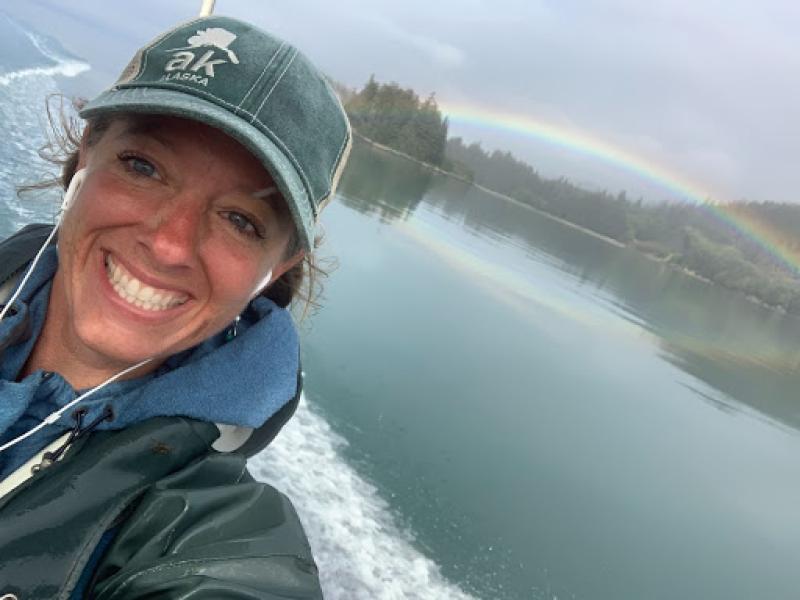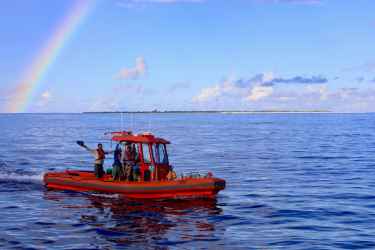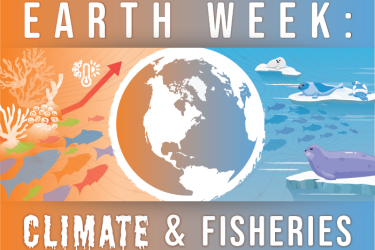With more coastline than all the Lower 48 states combined, Alaska is uniquely positioned for ocean farming and expanding U.S. aquaculture. In Alaska, where the cultivation and farming of the ocean is known as mariculture, a growing number of women are farming shellfish and seaweed.
Alaska currently has 73 active mariculture operations. They range from the largest kelp farm in the United States to smaller family-owned operations like Salty Lady Seafood. Located on less than an acre of water in Juneau, Salty Lady Seafood is a woman-owned and managed oyster farm. Owner Meta Mesdag started the farm in 2016 as a way to support her family while also creating an opportunity to spend more time outdoors with them.
Farming Can Offer Flexibility
Mariculture can offer more flexibility when compared to wild-capture fisheries. Growers often live near their farms and return home in the evening unlike wild-capture fishing, which sometimes requires days- or weeks-long trips out to sea. That makes it ideal for those with families or those looking to avoid longer stretches away from home. “I very rarely ever go to the farm without dragging at least one of my three kids along,” said Meta. “Even if they grumble when I tell them it’s time to go, they always feel great about having gone and enjoy the satisfaction that comes with working hard outside in one of the most beautiful places around."
Alaskan women are engaged in a range of mariculture production and seafood chain activities, from farmers and shuckers to marketers and coastal managers. Meta attributes this to a growing sense of empowerment and women recognizing their ability to turn new skills and their hard work into more than just a business. “Women recognize that finding innovative solutions to climate change is a priority and want to be a part of the solution when deciding what career path to take,” she added.
At Barnacle Foods, another Juneau company, cofounder Lia Heifetz is turning farmed bull kelp into salsa, pickles, seasonings, and hot sauce. Much like Salty Lady Seafood, their mariculture-based business aims to create a product while also benefiting the environment. They are working in mariculture to increase coastal resilience and diversify food production. Lia points to a growing interest in mariculture from those involved in Alaska’s traditional fisheries. “I think a lot of people, including women, are interested in supplementing their incomes, buffering their fishing season, and producing sustainable food with ecosystem benefits.”
Alaskan communities are also supporting their local mariculture farms and the women working on them. “We are a part of a community that recognizes the importance of improving our food security, diversifying our economy, and helping small businesses succeed for the greater good of Juneau,” added Meta. “My community has been tremendously supportive of my farm.”
Shaping a Growing Mariculture Industry
Even with the resilience and economic benefits, Alaskan mariculture still faces challenges to expansion. “Marine aquaculture in Alaska is still developing,” said Alicia Bishop, Alaska Aquaculture Coordinator at NOAA Fisheries. “That gives us lots of opportunities to craft a program that is right for Alaska and our natural resources while also increasing the accessibility of our industry.”
“As we work through challenges and barriers like permitting and social acceptance of mariculture, I am glad to see a growing diversity in the community that offers different experiences, backgrounds, and innovations,” added Bishop. Mariculture farmers are not the only ones driving innovation and working to address barriers in Alaska. Recognizing the potential for mariculture along the state’s 30,000 miles of coastline, an Administrative Order was signed to create a task force dedicated to advancing mariculture throughout the state.
Since its creation, the Alaska Mariculture Task Force established a goal of developing a $100 million mariculture industry in 20 years. Achieving such an ambitious plan will take a growing number of Alaskans starting mariculture farms in the right places and under the right conditions. NOAA has a number of resources for those looking to start a mariculture business. Many veteran Alaska mariculture farmers also encourage those interested to visit existing sites and join mariculture groups to ask questions about the benefits and challenges of starting an ocean farm in the last frontier.




